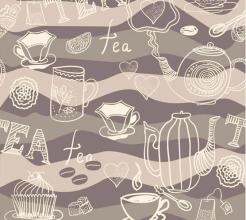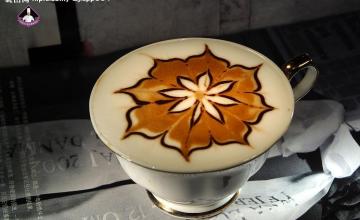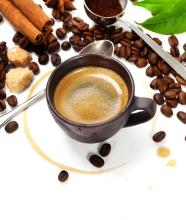Coffee fans must know the common sense of coffee
Coffee etiquette
[how to get a coffee cup] Coffee that you drink after a meal is usually served in a pocket cup. The ear of this kind of cup is so small that you can't get your fingers out. But even if you use a larger cup, don't put your finger through the ear and carry the cup. The correct way to hold a coffee cup is to hold the handle of the cup by your thumb and forefinger and then pick up the cup.
[how to add sugar to coffee] when adding sugar to coffee, the sugar can be scooped out with a coffee spoon and added directly to the cup, or you can first use a sugar clip to clip the cube sugar on the near side of the coffee plate, and then add the cube sugar to the cup with a coffee spoon. If you put the cube sugar directly into the cup with a sugar clip or hand, it may sometimes spill the coffee and stain the clothes or tablecloth.
[how to use coffee spoon] Coffee spoon is specially used to stir coffee. You should take it out when drinking coffee. No longer use a coffee spoon to scoop a spoonful of coffee to drink slowly, and do not use a coffee spoon to mash the cube sugar in the cup.
[what if the coffee is too hot] the freshly brewed coffee is so hot that you can gently stir it in the cup with a coffee spoon to cool it, or wait for it to cool naturally before drinking. It is very impolite to try to cool the coffee with your mouth.
[use of cups and saucers] the cups and saucers that hold coffee are specially made. They should be placed on the front or right side of the drinker, and the cup ear should point to the right. When drinking coffee, you can hold the cup ear of the coffee in your right hand and hold the coffee plate gently in your left hand, slowly moving to your mouth and sipping. It is not advisable to hold the cup and swallow, nor should you bow your head to the coffee cup. Don't make a noise when drinking coffee. When adding coffee, do not pick up the coffee cup from the coffee plate.
[coffee and snack] sometimes you can have some snacks when drinking coffee, but don't alternate between eating and drinking with a coffee cup in one hand and a snack in the other. When you drink coffee, you should put down the snack, and when you eat the snack, you should put down the coffee cup.
Flavor [flavor] is the overall impression of aroma, acidity, bitterness, sweetness and mellowness, which can be used to describe the overall feeling of contrast coffee.
Acidity [acidity] is the acidity and strong quality of all coffee grown on the plateau. Unlike bitterness or sour (sour), it has nothing to do with pH, but a refreshing and lively quality that promotes coffee to exert its functions of boosting the mind and clearing the taste.
Body [mellowness] is the taste of coffee on the tongue after drinking the prepared coffee. The change of mellowness can be as light as water to light, medium, high, fat, and even some Indonesian coffee is as thick as syrup.
Aroma [smell] Aroma refers to the smell and aroma emitted by coffee after conditioning. Bouquet is a less commonly used word that specifically refers to the taste of ground coffee powder. Aroma is usually specific and comprehensive. The words used to describe Aroma include: caramel, carbon roasted, chocolate, fruit, grass, malt, rich, rich, spicy and so on.
Bitter bitterness is a basic sense of taste, the sensory area is distributed in the base of the tongue. The bitterness of dark baking is deliberately created, but the most common cause of bitterness is too much coffee powder and too little water. Bitterness is not a consent word for sour.
Bland [light] Coffee grown in lowlands is usually quite light and tasteless. Coffee with insufficient powdered coffee and too much water will have the same light effect.
After brewing Briny [salty] coffee, if it is overheated, it will produce a salty taste. The coffee in some coffee shops belongs to this flavor Barista [barista]
Barista (Barista) occupation definition: a person engaged in coffee preparation, production and service. The main contents of the work include: (1) basic identification of coffee beans and blending of different flavors of coffee according to the characteristics of coffee beans; (2) using coffee equipment and coffee utensils to make coffee; (3) providing coffee services to customers; (4) spreading coffee culture.
Espresso [espresso]
Using the mellow coffee extracted from our espresso roasted beans, espresso is usually served in a small coffee cup and is often used to blend other unique coffee drinks.
Shot [one espresso]
One ounce of espresso. Each standard espresso consists of three parts: rich gold bubble [crema], mellow taste [body] and warm heart [heart]. Gold foam refers to the caramel-colored foam on the surface of espresso, which disappears a few seconds after the espresso is brewed.
Single [single espresso]
An espresso (about 1 ounce) extracted from an espresso machine, usually served alone or steamed with mellow hot milk. Most small and medium drinks contain an espresso.
Double [double espresso]
Two single espressos are standard for large drinks. If you want your medium coffee to be stronger, you can tell the service staff to add one more espresso for you.
Espresso Con Pana [concentrated Campbell blue]
The espresso is covered with smooth whipped cream.
Espresso Macchiato [concentrated macchiato]
Espresso is marked with soft foam.
Caffe Latte [latte]
A three-stage and smooth drink: a fresh espresso, filled with hot milk, and then covered with a thin layer of milk foam to create an amazing taste. Latte Macchiato [latte macchiato] is made in much the same way as a latte, except that macchiato must first add milk and then add coffee to "mark" it to make it taste smoother [Macchiato] means "mark" in Italian.

Important Notice :
前街咖啡 FrontStreet Coffee has moved to new addredd:
FrontStreet Coffee Address: 315,Donghua East Road,GuangZhou
Tel:020 38364473
- Prev

Coffee knowledge | concentrated formula
As the second part of the concentrated formula, this part is easy to measure, but it is more complex for its understanding and application. Quite simply, it refers to the weight of espresso in a cup. More total coffee: means more espresso in the cup. Less total coffee: means there is less espresso in the cup. This week I will explain the total amount of coffee, it is only
- Next

Hang-ear coffee and instant coffee
The earbag of follicular coffee should be the integration of filter coffee at this stage. Hanging-ear coffee is a very smart design, the product of fast-paced life and the welfare of lazy cancer patients. It is not only easy to operate, a variety of flavors, as long as a bag of coffee, a cup and 200ml hot water, you can enjoy the delicious coffee. Instant coffee is made by mixing coffee
Related
- Beginners will see the "Coffee pull flower" guide!
- What is the difference between ice blog purified milk and ordinary milk coffee?
- Why is the Philippines the largest producer of crops in Liberia?
- For coffee extraction, should the fine powder be retained?
- How does extracted espresso fill pressed powder? How much strength does it take to press the powder?
- How to make jasmine cold extract coffee? Is the jasmine + latte good?
- Will this little toy really make the coffee taste better? How does Lily Drip affect coffee extraction?
- Will the action of slapping the filter cup also affect coffee extraction?
- What's the difference between powder-to-water ratio and powder-to-liquid ratio?
- What is the Ethiopian local species? What does it have to do with Heirloom native species?

